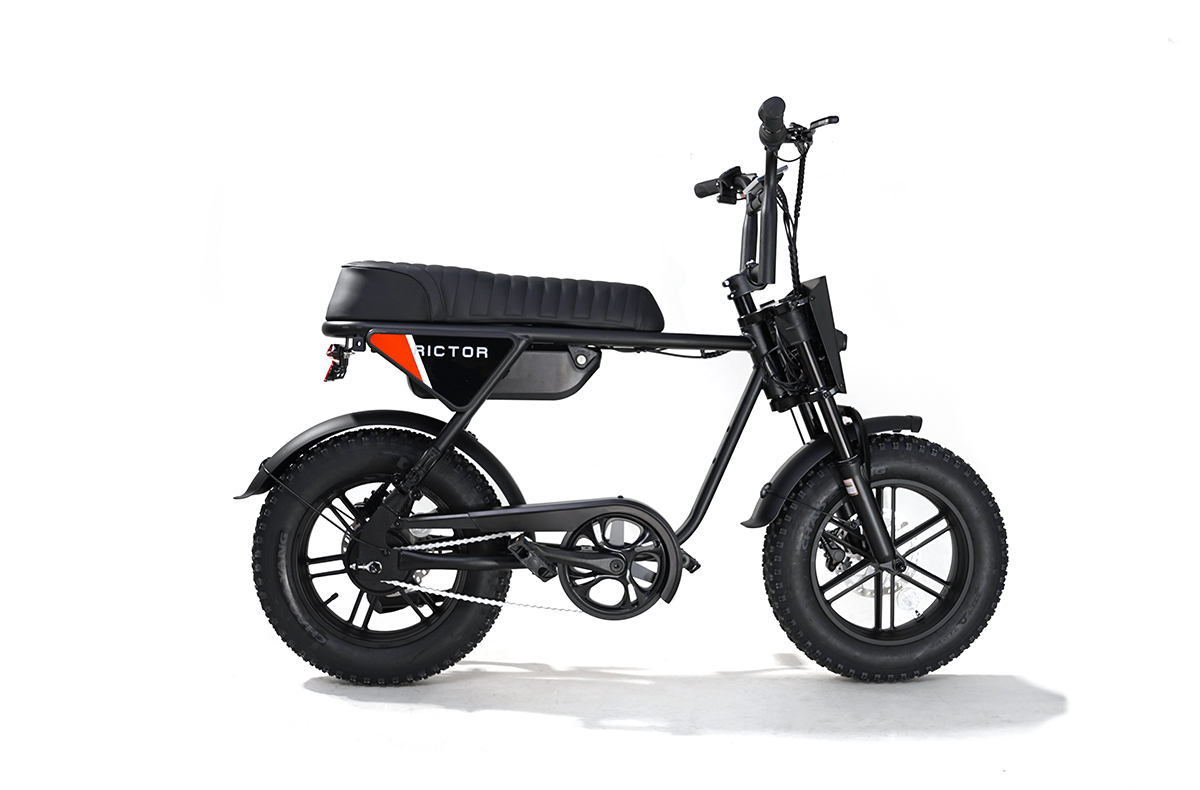
How to Prevent Cyclist Syndrome
Cyclist syndrome, also known as cyclist's palsy or handlebar palsy, is a common condition affecting many cycling enthusiasts. This uncomfortable nerve compression can sideline even the most dedicated riders. Let's explore effective prevention strategies to keep you pedaling comfortably for miles to come.
What Is Cyclist Syndrome
Cyclist syndrome occurs when prolonged pressure on the ulnar nerve (which runs through the wrist and hand) causes numbness, tingling, and weakness. This typically affects the pinky finger and ring finger, making it difficult to grip the handlebars properly. The condition develops when cyclists maintain the same hand position for extended periods, particularly on drop handlebars.
There's a delightful alternative that's been gaining traction among riders tired of numb fingers and achy wrists. Fat tire electric bikes are like the comfortable couches of the cycling world – they give your hands a much needed break! With electric assistance doing the heavy lifting on those challenging hills, your grip can stay relaxed.
Many riders who've battled cyclist syndrome have found that switching to an electric bike significantly reduces hand pressure since you're not constantly bearing down on the handlebars to generate power. The wider tires absorb road vibration (a notorious contributor to nerve compression), while the pedal assist means you can sit more upright, taking weight off your hands altogether.
SEE ALSO How Much Tire Pressure Your E-Bike Needs
Proper Bike Fit
A professional bike fitting is perhaps the most important preventive measure against cyclist syndrome. When your bike fits you properly, you distribute weight more evenly, reducing pressure on any single point.
-
Ensure your saddle height allows for a slight bend in the knee when at the bottom of your pedal stroke
-
Position your handlebars at the right height and reach for your body type
-
Consider your stem length and angle to optimize your riding position
-
Check that your saddle tilt keeps pressure off your hands and wrists
Essential Equipment Modifications
The right equipment can significantly reduce your risk of developing cyclist syndrome:
Padded Gloves
Cycling-specific gloves with strategic padding help cushion the ulnar nerve. Look for gloves with gel padding positioned at the base of the palm where the ulnar nerve passes.
Handlebar Tape
Double wrapping your handlebars with quality tape provides additional cushioning. Gel inserts under the tape at key pressure points can further reduce compression.
Ergonomic Handlebars
Consider upgrading to ergonomic handlebars designed to distribute pressure more evenly across your palms. These often feature a flattened top section that provides more surface area for your hands.
Proper Riding Technique
How you position yourself on the bike dramatically impacts nerve compression:
-
Change hand positions frequently during your ride
-
Keep your wrists neutral, not bent up or down
-
Maintain a relaxed grip - many cyclists hold on too tightly
-
Bend your elbows slightly to absorb road vibration instead of letting it travel to your hands
-
Engage your core muscles to support your upper body weight
Strength Training for Prevention
A strong upper body better supports your riding position, reducing pressure on your hands:
-
Core strengthening exercises help support your upper body
-
Wrist and forearm exercises improve stability
-
Shoulder and back workouts enhance overall posture on the bike
Aim for two to three strength training sessions per week focusing on these areas.
Regular Stretching Routines
Incorporate these stretches into your pre-ride and post-ride routines:
-
Wrist flexor stretch: Extend your arm with palm up, use opposite hand to gently pull fingers back
-
Wrist extensor stretch: Extend your arm with palm down, use opposite hand to gently pull fingers toward your body
-
Forearm rotation: With elbow bent at 90 degrees, rotate palm up and down
-
Shoulder rolls: Circular motions to release tension in the shoulders and upper back
Hold each stretch for 30 seconds and repeat 2-3 times.
Taking Breaks During Long Rides
Even with perfect form and equipment, long rides increase your risk of cyclist syndrome:
-
Stop for a quick break every 30-45 minutes on longer rides
-
Shake out your hands and rotate your wrists during breaks
-
Perform quick wrist stretches when stopped at traffic lights
-
Consider using cycling computers or apps that remind you to change position
Gradual Training Progression
Gradually increasing ride duration helps your body adapt to the demands of cycling:
-
Add no more than 10% distance per week to your longest ride
-
Include recovery days between challenging rides
-
Mix up your training with different types of rides and intensities
-
Listen to your body and back off when you notice early symptoms
When to Seek Medical Help
-
Persistent numbness or tingling that doesn't resolve quickly after riding
-
Weakness in grip strength that interferes with daily activities
-
Pain that wakes you at night or persists throughout the day
-
Symptoms that worsen despite implementing preventive measures
Early intervention can prevent cyclist syndrome from becoming a chronic condition.
Conclusion
Preventing cyclist syndrome requires a multifaceted approach including proper bike fit, appropriate equipment, good technique, and supportive strength training. By implementing these strategies systematically, most cyclists can avoid this uncomfortable condition entirely or manage minor symptoms before they develop into something more serious. Cycling should be enjoyable and pain-free—taking these preventive steps ensures you'll be riding comfortably for years to come.
FAQs
Can cyclist syndrome cause permanent damage if left untreated?
Yes, prolonged compression of the ulnar nerve without intervention can lead to long-term nerve damage and potentially permanent weakness or numbness in affected fingers.
How quickly will I notice improvement after implementing prevention strategies?
Minor symptoms often improve within 1-2 weeks of making adjustments to your bike fit and riding technique. More severe cases may take several weeks to months of consistent prevention strategies and possibly medical intervention.
Is it possible to continue cycling while recovering from cyclist syndrome?
Limited cycling may be possible during recovery, but you should significantly modify your position, reduce ride duration, and take more frequent breaks. Always consult with a healthcare provider for personalized advice.





